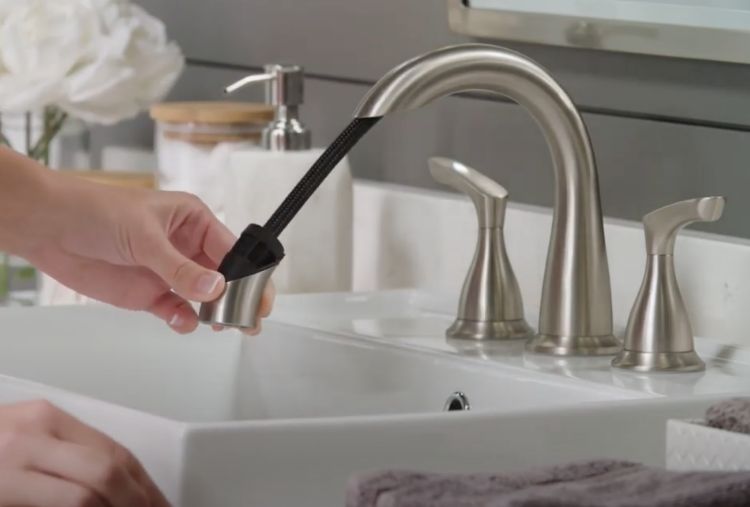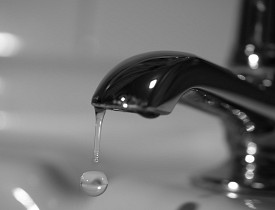Every person is bound to have their own unique opinion involving How to Fix a Dripping or Leaky Faucet .

Trickling faucets could appear like a small hassle, but their influence goes beyond just the annoyance of the sound. From drainage to incurring unnecessary monetary expenses and health and wellness risks, ignoring a leaking faucet can result in various repercussions. In this short article, we'll explore why it's important to address this typical family problem quickly and successfully.
Waste of Water
Environmental Effect
Trickling faucets contribute significantly to water wastage. According to the Epa (EPA), a single faucet dripping at one drip per secondly can throw away greater than 3,000 gallons of water each year. This not just pressures water resources but additionally impacts environments and wild animals dependent on them.
Financial Expenses
Enhanced Water Expenses
Past the environmental influence, dripping taps can pump up water costs significantly. The gathered waste with time converts into greater energy costs, which might have been prevented with timely repair services.
Potential Home Damages
Furthermore, extended trickling can bring about damage to fixtures and surface areas bordering the tap. Water build-up can create discoloration, corrosion, and also structural issues if left ignored, resulting in additional fixing prices.
Wellness Issues
Mold and Mildew Development
The constant existence of moisture from a trickling faucet produces a perfect environment for mold and mildew and mold growth. These fungi not just compromise indoor air quality however additionally position health and wellness threats, specifically for individuals with breathing conditions or allergies.
Waterborne Conditions
Stationary water in leaking taps can become a breeding place for bacteria and other microorganisms, increasing the risk of waterborne illness. Pollutants such as Legionella germs grow in stationary water, potentially bring about significant health problems when consumed or inhaled.
Do it yourself vs. Expert Repair service
Pros and Cons of DIY Repair Work
While some might try to take care of a trickling faucet themselves, DIY repair work feature their own set of challenges. Without proper understanding and devices, DIY efforts can worsen the issue or lead to incomplete repair work, prolonging the issue.
Benefits of Hiring a Specialist Plumber
Employing an expert plumber guarantees that the underlying cause of the leaking faucet is attended to effectively. Plumbing professionals have the expertise and equipment to diagnose and repair faucet problems effectively, conserving time and lessening the threat of more damages.
Step-by-Step Overview to Taking Care Of a Dripping Tap
Devices Needed
Prior to attempting to take care of a leaking tap, collect the essential tools, including a flexible wrench, screwdrivers, substitute components (such as washers or cartridges), and plumber's tape.
Common Faucet Issues and Their Solutions
Identify the type of tap and the certain issue triggering the drip. Usual issues include damaged washing machines, corroded shutoff seats, or defective O-rings. Describe producer guidelines or online tutorials for detailed advice on repair work.
Safety nets
Routine Upkeep Tips
To stop trickling faucets, carry out routine upkeep such as cleansing aerators, checking for leaks, and replacing worn-out parts quickly. In addition, consider installing water-saving devices or upgrading to much more effective fixtures.
Significance of Prompt Repair Works
Dealing with leaking faucets as soon as they're noticed protects against more water waste and potential damage, ultimately conserving both water and money in the long run.
Influence On Residential Or Commercial Property Worth
Understanding of Well-Maintained Building
Keeping a home in good condition, consisting of resolving upkeep problems like leaking faucets, boosts its perceived worth and desirability amongst potential purchasers or lessees.
Influence on Resale Worth
Qualities with properly maintained plumbing fixtures, including taps, command greater resale worths in the property market. Dealing with leaking taps can contribute to a positive impact throughout residential property inspections and settlements.
Environmental Obligation
Private Contribution to Preservation
Taking responsibility for repairing dripping faucets straightens with more comprehensive initiatives towards water conservation and environmental sustainability. Every person's activities collectively make a significant influence on protecting precious sources.
Sustainable Living Practices
By prioritizing punctual repair work and taking on water-saving routines, individuals add to sustainable living practices that profit both present and future generations.
Final thought
Addressing a leaking tap exceeds plain convenience; it's a crucial step towards preserving water, lowering monetary costs, and protecting health and wellness and building. Whether via do it yourself repair work or expert aid, acting to take care of trickling taps is a little yet impactful method to advertise accountable stewardship of sources and add to a much healthier, extra lasting future.
How to Fix a Dripping or Leaky Faucet
A leaking faucet is one of the most common problems that homeowners encounter, but it being commonplace doesn’t make it any less annoying. The constant drip drip drip of a leaking bathtub faucet, showerhead, or sink tap can disturb your home’s serenity. Left neglected, a dripping faucet can also result in higher water bills and discoloration or mold growth in your sink or plumbing fixtures.
Fortunately, you don’t have to be a trained plumber to know how to stop a dripping faucet. With some basic tools, replacement parts, and a little patience, leaky faucet repair is a breeze. In this article, we’ll explain what causes dripping faucets and how you can fix them.
What Causes a Leaking Faucet?
Kitchen and bathroom faucets come in all manner of designs, but most involve some combination of valves, O-rings, seals, and washers. The O-ring is usually the weakest link, but any one of these pieces can wear down over time. Heat, moisture, temperature fluctuations, minerals, mold, and movement can contribute to warping and corrosion, breaking the watertight seal. This just comes with the territory of being a homeowner. Everything is always subject to wear and tear, and some component parts of your appliances and fixtures need to be replaced on occasion. At least replacement O-rings are cheap!
More rarely, dripping faucets can be a symptom of excessively high water pressure. Were this the case in your home, you would probably notice that the leak is not isolated to one faucet. Water pressure issues are harder to resolve on your own. We recommend contacting a professional plumber if you suspect your water pressure is too high.
How to Fix a Dripping Faucet
Pipe wrench or monkey wrench Allen wrench set Screwdrivers Old towel or rag Shut off the water.
Before you do anything, you need to turn off the water to keep from drenching your kitchen or bathroom. You should find a valve under the sink and against the wall. Once you’ve turned this valve, try turning the faucet on to confirm that the water source has been cut off.
If you can’t locate your local valve for the faucet you’re working on, you can always shut off the water to the house at the main valve. Of course, this will prohibit anyone from using the sinks, showers, or toilets while you’re working on the faucet that’s giving you trouble.
Plug or block the drain.
You’ll be disassembling the faucet and removing some small bits of hardware. Plug the drain with a stopper or rag to avoid the possibility of a small screw falling into your P-trap.
Take apart the faucet assembly.
There are several varieties of kitchen and bathroom faucets, each with its own manner of assembly. For detailed instructions on how to disassemble your faucet, you can refer to the fixture’s manual or contact the manufacturer. If you know whether you have a ball, disc, cartridge, or compression faucet, you can find detailed schematics online.
In general, you need to begin by removing the faucet handles. You might notice a small screw that you’ll need to remove with a screwdriver or Allen wrench. If you don’t see any visible securing hardware, it’s likely hidden under a decorative cap that can be unscrewed or popped off with flathead screwdriver.
Remove each piece methodically, consulting a schematic when necessary. Take notes or arrange the pieces in such a way to make it easier to correctly reassemble the faucet later.
Remove the cartridge.
Once you’ve removed the handles and securing hardware, you should be able to remove the valve cartridge or stem. Some cartridges will slide right out. Other faucet models will require you to loosen a nut with a pipe wrench before you can remove the valve stem.
Examine the exposed hardware.
With the cartridge or stem removed, inspect the component parts. Check the rubber O-rings for wear and tear. Also examine the seat washer for corrosion or other damage. These pieces are usually the responsible parties for a dripping faucet, but it’s worth inspecting the other component parts while you have the faucet disassembled.
Find replacement parts.
Once you’ve identified which faucet component has failed, find an identical replacement. Your local hardware store should have O-rings, seat washers, and other standard components in stock. If you have a luxury or uncommon faucet, you may have to contact the manufacturer for a replacement part.
It’s a good idea to take your old parts with you to the hardware store so you can compare them with the store’s inventory and be sure you’re purchasing the correct replacement.
Reassemble the faucet.
With your new parts in hand, reconstruct the faucet and handles. Don’t be tempted to overtighten screws or nuts. You might think this could create a better seal, but it can instead damage or bend a delicate part of the assembly and create a new problem for you.
Turn on the water and test the faucet.
The only thing left to do is test your work. Unplug the sink, turn the water back on, and try the faucet. Congratulate yourself on a job well done!
https://www.libertyhomeguard.com/how-to-fix-a-dripping-or-leaky-faucet/

We hope you liked our excerpt about Water Dripping from Faucet: Why and How to Fix. Thank you so much for taking time to read through our piece of content. Do you know about somebody else who is looking into the topic? Please feel free to share it. Many thanks for your time invested reading it.